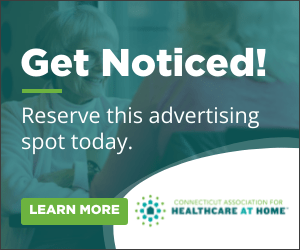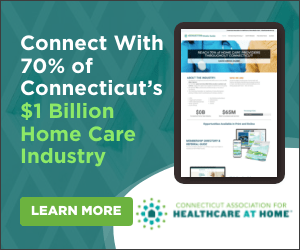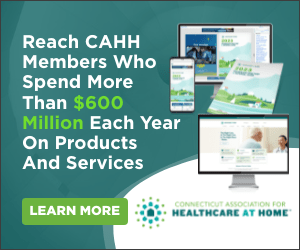 |
||||||||||||||||||||||||||
| November 16, 2023 | ||||||||||||||||||||||||||
Traditional Medicare beneficiaries are finding they have solid access to home health care.
Medicare Advantage (MA) members utilizing home health care, on the other hand, are having a much harder time accessing care.
That’s according to data in the newly released 2023 Home Care Chartbook from the Research Institute for Home Care (RIHC).
The RIHC report is a detailed overview of the home health landscape. It includes data on both demographics and organizational trends.
“Home health users under Medicare say they’re not having much trouble accessing needed care,” Jennifer Schiller, executive director at RIHC, told Home Health Care News. “It’s even at a lower rate than all Medicare patients regardless of setting—so that’s great. One concern that certainly comes up is that one in 10 Medicare Advantage patients say they have trouble accessing needed care.”
Source: Patrick Filbin, Home Health Care News, Nov. 10, 2023
The National Labor Relations Board (“Board”) published its final rule in the Federal Register, which has the effect of greatly expanding who may be considered a “joint employer” under the National Labor Relations Act (“Act”). Under the final rule published Oct. 27, 2023, two or more companies are considered “joint employers” of particular employees if they “share or codetermine those matters governing employees’ essential terms and conditions of employment,” such as wages, benefits, and other compensation, work and scheduling, hiring and discharge, discipline, workplace health and safety, supervision, assignment, and work rules. Critically, the Board will now consider both direct evidence of control as well as evidence of reserved and indirect control (even if unexercised) over these essential terms and conditions of employment under its new rule.
Under the Act, two or more separate business entities are joint employers of a single workforce if “they share or co-determine those matters governing the essential terms and conditions of employment.” While the Board has long recognized the concept of joint employer in determining liability, the standard for determining joint-employer status has repeatedly changed over the last decade. From 1984 until 2015, the Board focused on whether a putative joint employer actually exercised “direct and immediate control” over the essential terms and conditions of the relevant worker’s employment, such as hiring, firing, discipline, supervision, and direction. Although a fact-specific inquiry, this standard was widely seen as creating a fairly predictable legal regime for most businesses.
Source: NAHC
The Medicare Payment Advisory Commission (MedPAC) has a long history of examining the Medicare Hospice Benefit and over the years has made multiple recommendations that have resulted in hospice payment and policy changes. During its November meeting, the Commission discussed four hospice projects that it intends to pursue over the coming years. The projects are as follow:
Source: NAHC
CMS has released a revised version of the OASIS-E User Manual. The manual only incorporated updated guidance from the quarterly Q&As through October 2023. There is no change to the actual OASIS instrument.
The change table for the updates notes 24 edits, with chapter and section for each update and a description of the change.
The 2024 update to the OASIS-E Manual, and the associated change table, are available in the Downloads section on the OASIS Users Manuals page: https://www.cms.gov/medicare/quality/home-health/oasis-user-manuals.
Source: DecisionHealth
CMS is moving forward with the hospice Special Focus Program (SFP), effective Jan. 1, which takes aim at poorly performing hospices with increased monitoring and the threat of potential removal from the Medicare program.
Unfortunately, it’s too late for hospices to make changes to avoid being selected for the program, says Robert Markette, attorney with Hall, Render, Killian, Heath & Lyman in Indianapolis, Ind.
CMS is looking back on the last three years of survey data, so even if you’ve made improvements since the proposed rule came out, survey deficiencies from the past three years put you at risk for selection, Markette says.
Source: Sarah Schock, DecisionHealth, Nov. 9, 2023
Oakland, NJ, November 2023—The national average hourly rate for RNs in home health agencies increased 3.88% in 2023, according to the 2023-2024 Home Care Salary & Benefits Report just released by Hospital & Healthcare Compensation Service (HCS). The report is supported by the Connecticut Association for Healthcare at Home. Hourly rate increase data represents the trend data percent increase from participants who submitted data for both the prior/current years’ study.
The national average hourly rate for RNs was $38.37. In a comparison of rates by state, RNs in Connecticut received $46.72/hour, RNs in Massachusetts received $47.18/hour, and California RNs ranked the highest in pay at $58.85/hour.
Adult Family Living supports those that care for a loved with whom they live. Careforth understands the unique needs of caring for elders. Our experienced care teams stand alongside caregivers and their loved ones, helping solve day-to-day challenges while anticipating what is ahead.
The designated primary caregiver can be a family or nonfamily member residing with a loved one who may have a complex medical condition or disability. With Careforth, the caregiver has an assigned Care Team consisting of a Registered Nurse and Care Manager and receives a tax-free monthly stipend.
This is a caregiver support program under the CT Home Care Program for Elders.
Objectives:
|
||||||||||||||||||||||||||
| Past Issues | Subscribe | cthealthcareathome.org | Advertise with Us | ||||||||||||||||||||||||||






